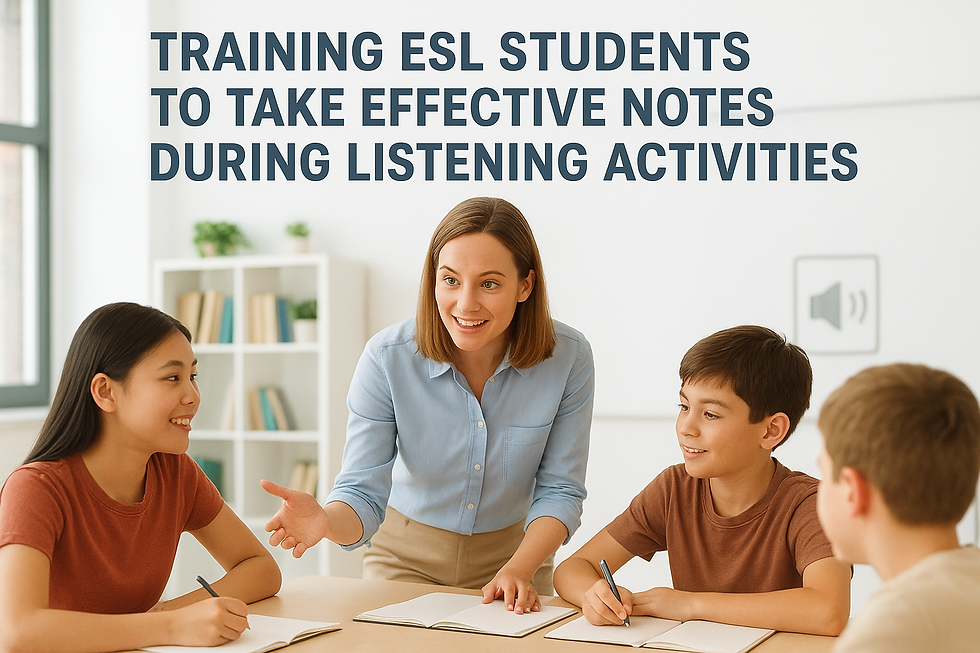Teaching Vocabulary with Word Maps and Visuals
- Mike Kim
- Sep 27
- 1 min read

🎯 Introduction
Memorizing word lists can feel overwhelming for ESL learners. Word maps — supported by visuals — transform vocabulary into meaningful, connected networks that are easier to recall and use.
🧠 Why Word Maps Help ESL Students
Organize related words for easier memory.
Visuals make abstract ideas concrete.
Encourage active learning instead of rote memorization.
Can be reused for writing and speaking practice.
📚 Practical Word Map Activities
1. Theme Maps
Pick a theme (e.g., “Food”). Students group words into categories (fruits, drinks, snacks).
2. Synonym Webs
Teach multiple ways to say one word (e.g., “big: large, huge, massive”).
3. Picture-Word Maps
Add drawings or magazine cutouts to reinforce meaning.
4. Sentence Connections
Students create sentences linking two or more words from their map.
💡 Pro Tip
Have students keep a “Word Map Journal” to build personal visual dictionaries throughout the course.
📌 Final Thought
Word maps don’t just teach words — they teach connections. GoTEFL trains teachers in creative vocabulary strategies, and TEIK gives you real classrooms where these visuals make learning unforgettable.




Comments